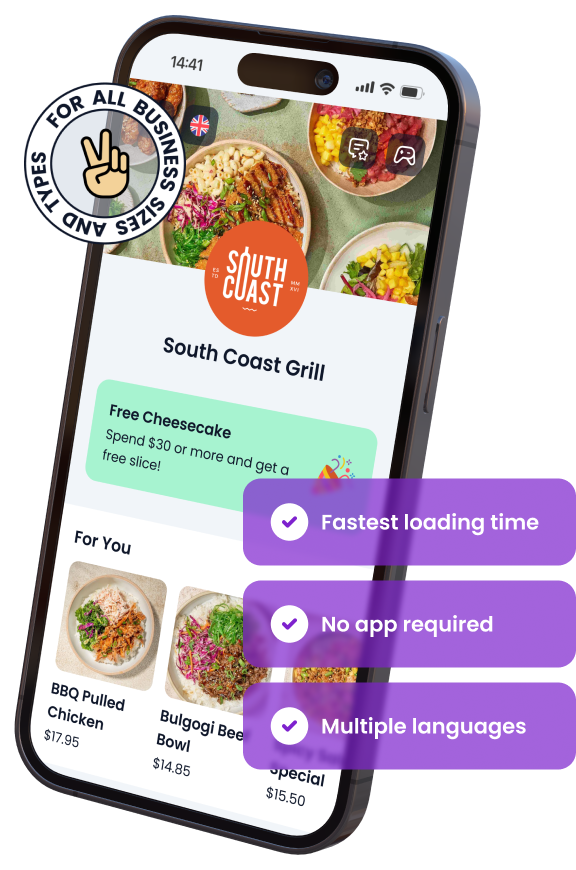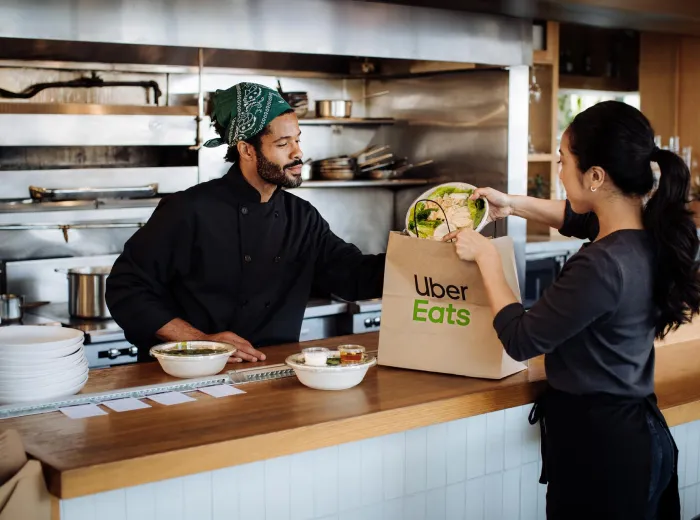

Foodpanda Fees and Commissions for Restaurants: Detailed 2025 Guide
As the food delivery industry continues to expand, platforms like Foodpanda have become indispensable for restaurant owners. Foodpanda connects restaurants with a vast network of customers, offering unparalleled opportunities to grow sales and improve brand visibility. However, alongside the benefits come the inevitable fees and commissions, which can significantly impact a restaurant’s bottom line.
Understanding the nuances of Foodpanda’s fee structure is not just a good business practice—it’s a necessity in 2025. With increasing competition in the food delivery space, restaurants need to optimize their pricing strategies, weigh the value of these platforms, and find ways to minimize costs without compromising customer experience.
This guide provides a detailed breakdown of Foodpanda’s fees and commissions, offering practical insights for restaurant owners to make informed decisions. Whether you’re a new partner or a long-time user, understanding how these charges work can help you stay ahead in the ever-evolving food delivery market.
What Is Foodpanda and How Does It Work?
Foodpanda is a leading food delivery and online ordering platform that connects restaurants with customers through its user-friendly app and website. Operating in multiple countries, Foodpanda has become a go-to solution for diners seeking convenience and variety, while offering restaurants a streamlined way to expand their reach and drive sales. Here’s an in-depth look at how Foodpanda operates and the benefits it provides to restaurant owners.
Overview of Foodpanda's Services
Foodpanda offers a comprehensive suite of services designed to make online food ordering seamless for both customers and restaurant partners. Its primary features include:
- Online Food Delivery: Customers can browse menus, place orders, and get food delivered to their doorsteps.
- Pick-Up Option: For those in a hurry, Foodpanda allows customers to place orders and pick them up directly from the restaurant.
- Marketing Support: Restaurants gain access to Foodpanda’s promotional tools, helping them boost visibility through special offers, discounts, and advertising placements.
- Logistics Solutions: Foodpanda handles delivery logistics, employing a network of riders to ensure timely and efficient deliveries.
By handling logistics and customer engagement, Foodpanda enables restaurants to focus on food quality and operations while reaching new markets effortlessly.
Key Benefits for Restaurants
Partnering with Foodpanda comes with a range of advantages that make it a valuable tool for restaurant growth:
- Increased Customer Reach: Foodpanda connects restaurants to a vast customer base actively searching for dining options.
- Improved Convenience: Restaurants don’t need to invest in their own delivery infrastructure, as Foodpanda manages the entire delivery process.
- Enhanced Marketing Opportunities: Through targeted campaigns and featured listings, Foodpanda helps restaurants attract more orders.
- Data and Insights: Restaurants can access performance analytics, such as top-selling dishes, customer feedback, and order trends.
These benefits not only simplify operations but also enable restaurants to optimize their offerings and tailor their services to customer needs, boosting overall profitability.
Why Understanding Foodpanda Fees Is Essential
Partnering with Foodpanda can significantly enhance a restaurant’s visibility and sales, but it comes at a cost. The fees and commissions charged by the platform directly affect your profit margins and operational decisions. To make the most of this partnership, it’s essential to have a clear understanding of how these charges work and their impact on your business.
Impact on Restaurant Profit Margins
Foodpanda fees can take up a significant portion of your earnings, so managing them wisely is crucial for profitability. Here’s why:
- Percentage-Based Commissions: Foodpanda typically charges a percentage of each order’s value, meaning higher sales volumes don’t always translate to higher profits unless costs are managed.
- Fixed Charges on Promotions: If you choose to participate in Foodpanda’s promotional campaigns, these fees add to your overall expenses.
- Balancing Pricing Strategy: To offset fees, restaurants may need to adjust their pricing, but this can influence customer perception and order frequency.
By understanding the fee structure, restaurant owners can strike a balance between leveraging the platform’s benefits and maintaining sustainable margins.
Common Misconceptions About Foodpanda Charges
Misunderstanding Foodpanda’s fee structure can lead to misinformed decisions. Let’s debunk some common myths:
- “All fees are hidden”: While Foodpanda fees might seem complex, most charges are outlined in the initial agreement. Lack of clarity often stems from not reviewing the details thoroughly.
- “Fees are non-negotiable”: While commission rates are generally fixed, large or high-performing restaurants may have the opportunity to negotiate better terms.
- “Foodpanda takes all the profit”: While fees can be substantial, the increased reach and order volume often offset these costs, especially if managed strategically.
Avoiding these misconceptions allows restaurant owners to make informed decisions, plan budgets effectively, and maximize the benefits of working with Foodpanda.
Foodpanda Fees and Commission Structure
Understanding Foodpanda’s fee and commission structure is essential to managing your partnership with the platform effectively. These costs vary depending on location, restaurant size, and specific services utilized, but they generally fall into a few key categories. Below is a detailed breakdown of how these charges work.
Commission Rates for Restaurants
Foodpanda charges a commission on every order processed through its platform. Key details include:
- Percentage-Based Commissions: Typically ranges between 15% to 30% of the order value, depending on factors such as restaurant type and location.
- Customized Rates: Larger restaurants or chains may negotiate lower commissions based on higher order volumes or strategic partnerships.
- Variable Rates by Service: Some regions or cities may have different commission structures for pick-up orders versus delivery orders.
This commission serves as the platform’s primary revenue source, making it a consistent cost for all partner restaurants.
Delivery and Service Fees
In addition to commissions, Foodpanda applies delivery and service fees to facilitate its operations. These include:
- Delivery Fees: Paid by customers but can indirectly affect restaurants if the charges deter orders. Delivery fees vary based on:
- Distance between the restaurant and customer
- Order size and complexity
- Time of day (e.g., peak hours may incur higher fees)
- Service Fees: Applied to cover platform maintenance and support, often a small fixed amount or a percentage of the order value.
Understanding these fees helps restaurants manage customer expectations regarding pricing and delivery.
Additional Costs to Consider
Beyond basic commissions and delivery fees, restaurants may incur other costs when working with Foodpanda:
- Promotional Campaign Fees:
- Paid campaigns for increased visibility on the app.
- Discounts or special offers where the restaurant bears part of the cost.
- Subscription Charges:
- Monthly or annual fees for premium features like advanced analytics or exclusive marketing opportunities.
- Setup Fees:
- Initial costs for onboarding, including menu digitization and platform integration.
By accounting for these additional expenses, restaurant owners can better plan their budgets and evaluate the ROI of using Foodpanda. Knowing where your money goes enables you to adjust your strategies to maintain profitability while maximizing the platform’s benefits.
How Foodpanda Fees Compare to Competitors
Foodpanda operates in a highly competitive food delivery market, with rivals like Uber Eats, DoorDash, and Grab vying for restaurant partnerships. Comparing Foodpanda’s fees and commissions with its competitors can help restaurant owners make informed decisions about their delivery strategy.
Comparison with Uber Eats, DoorDash, and Grab
Foodpanda’s fee structure aligns closely with industry norms, but subtle differences can impact restaurant profitability. Here’s a breakdown:
- Commission Rates:
- Foodpanda: Typically 15% to 30% of order value, depending on location and services.
- Uber Eats: Often 20% to 35%, with variations based on the service package (e.g., delivery, pick-up only).
- DoorDash: Charges around 15% to 30%, but offers a tiered pricing model for small businesses.
- Grab: Similar rates of 20% to 30%, with added costs for promotions and delivery services.
- Delivery Fees:
- All platforms charge customers delivery fees, which vary based on factors like distance and time.
- Foodpanda offers competitive delivery pricing but may vary more in densely populated urban areas.
- Promotional Costs:
- Foodpanda’s promotional campaigns tend to be cost-effective compared to Uber Eats and Grab, though they may offer fewer custom options.
- DoorDash provides flexible promotional tools, often at a premium.
This comparison highlights that while Foodpanda’s fees are comparable, the platform may offer cost advantages for restaurants in certain regions or operational setups.
Is Foodpanda More Cost-Effective?
When evaluating cost-effectiveness, consider the following aspects:
- Customer Base and Reach:
- Foodpanda’s strong market presence in Asia and select regions often means better local customer engagement.
- Competitors like Uber Eats may offer a broader international reach but could charge higher commissions for access.
- Platform Features:
- Foodpanda focuses on affordability for small-to-medium-sized restaurants, while competitors may cater more to large chains with extensive budgets.
- Order Volume vs. Fees:
- For restaurants with a high volume of smaller orders, Foodpanda’s relatively lower setup and promotional fees can make it more profitable.
- Larger restaurants may find value in negotiating lower rates with platforms like DoorDash or Uber Eats.
Understanding these nuances allows restaurant owners to assess which platform aligns best with their goals, operations, and target audience. While Foodpanda may not always have the lowest fees, its overall value proposition often makes it an attractive option for growth-focused restaurants.
Tips to Minimize Foodpanda Costs
While partnering with Foodpanda provides significant benefits, managing its fees and commissions effectively is crucial to maintaining profitability. By adopting the right strategies, restaurant owners can reduce costs without compromising on service quality or customer satisfaction.
Optimize Your Menu for Online Orders
A well-optimized menu can significantly improve your profit margins by focusing on items that perform well in delivery settings. Here’s how:
- Highlight High-Margin Items:
- Promote dishes with lower ingredient costs and higher profitability.
- Use enticing descriptions and images to draw attention to these items.
- Streamline Your Offerings:
- Reduce the number of low-profit or rarely ordered dishes to minimize complexity.
- Focus on items that travel well and maintain quality during delivery.
- Adjust Portion Sizes:
- Offer smaller, affordable portions of popular dishes to cater to different price points and encourage upselling.
These strategies not only increase efficiency but also help you make the most of every order placed through Foodpanda.
Leverage Foodpanda Promotions Strategically
Foodpanda’s promotional tools can boost your visibility, but overuse can eat into your profits. Use them strategically:
- Targeted Campaigns:
- Participate in promotions that align with peak times or specific events to maximize ROI.
- Avoid blanket discounts that may attract low-value orders.
- Monitor Campaign Performance:
- Regularly review analytics to measure the success of promotions and tweak your approach as needed.
- Promote Upselling:
- Use offers like “free delivery on orders above a certain amount” to encourage larger purchases.
By carefully choosing which promotions to join, you can drive sales without overextending your budget.
Negotiate a Better Commission Rate
For restaurants with higher order volumes or unique selling points, negotiating better terms with Foodpanda can make a significant difference:
- Highlight Your Value:
- Showcase your restaurant’s strong customer base, order volume, or popularity to negotiate lower rates.
- Leverage positive reviews and consistent performance metrics as evidence.
- Seek Tailored Agreements:
- Ask for customized fee structures based on specific services or operational setups, such as pick-up-only partnerships.
- Collaborate on Win-Win Solutions:
- Suggest co-branded promotions or initiatives that benefit both your restaurant and Foodpanda, potentially leading to shared costs.
With a clear strategy and data to back your requests, you can reduce your commission rates and improve your overall profitability.
By implementing these tips, restaurant owners can maximize the value of their Foodpanda partnership while keeping costs under control, ensuring sustainable growth and profitability.
Benefits of Partnering with Foodpanda Despite the Fees
While Foodpanda’s fees and commissions might seem like a significant expense, the platform offers numerous benefits that can drive growth and profitability for restaurants. By leveraging Foodpanda strategically, you can unlock opportunities that outweigh the associated costs.
Boosting Sales During Off-Peak Hours
Foodpanda helps restaurants increase revenue by driving orders even during slower times. Key advantages include:
- Expanded Customer Base:
- Access to customers searching for food options outside of traditional meal times.
- Exposure to new audiences who may become repeat customers.
- Promotional Campaigns:
- Time-sensitive deals, such as “off-peak discounts,” encourage customers to order during quiet hours.
- Spotlight promotions can help highlight your restaurant to a larger audience.
- Increased Order Volume:
- Catering to late-night cravings or mid-afternoon snack demands keeps your kitchen busy throughout the day.
By filling gaps in customer demand, Foodpanda can help stabilize your revenue stream and maximize operational efficiency.
Access to Insights and Analytics
Foodpanda provides powerful data tools that help restaurant owners make informed business decisions. Benefits include:
- Performance Analytics:
- Track order trends, peak times, and customer preferences to optimize your menu and operations.
- Identify top-performing items to focus marketing efforts effectively.
- Customer Insights:
- Understand your audience’s ordering habits, allowing for targeted promotions and personalized offerings.
- Operational Feedback:
- Use data on delivery times and order accuracy to improve customer satisfaction and streamline processes.
These insights empower restaurants to refine their strategies and stay competitive in a fast-paced market.
Simplified Logistics and Delivery Management
One of Foodpanda’s most significant advantages is handling the logistics of food delivery. This includes:
- Efficient Delivery Network:
- Foodpanda’s extensive fleet of riders ensures quick and reliable delivery, reducing customer wait times.
- Reduced Operational Overheads:
- No need to invest in hiring and training delivery staff or managing a fleet of vehicles.
- Seamless Order Processing:
- Orders are received and tracked through Foodpanda’s platform, minimizing errors and improving efficiency.
By outsourcing logistics, restaurants can focus on what they do best: preparing great food and delivering excellent customer experiences.
Enhanced Marketing Opportunities
Foodpanda’s platform provides valuable marketing tools that amplify your restaurant’s visibility:
- Featured Listings:
- Appear prominently in search results and on Foodpanda’s homepage to attract more customers.
- Exclusive Offers:
- Promote special deals to drive customer engagement and increase order volumes.
- Social Media and Email Campaigns:
- Benefit from Foodpanda’s marketing outreach to reach a broader audience.
These marketing advantages help your restaurant stand out in a crowded market, driving both new and repeat business.
By focusing on these benefits, restaurant owners can make the most of their Foodpanda partnership, ensuring long-term success despite the associated fees.
Challenges Restaurants Face with Foodpanda Fees
While Foodpanda offers numerous benefits, the fees and commissions associated with the platform can create challenges for restaurant owners. Understanding these obstacles and addressing them proactively is essential to maintaining profitability and customer satisfaction.
High Commissions on Small Orders
Foodpanda’s percentage-based commission model can disproportionately affect smaller orders, making it difficult for restaurants to achieve profitability on low-value transactions. Key concerns include:
- Reduced Profit Margins:
- Commissions on small orders can eat into already thin margins, especially for restaurants with lower-priced menu items.
- Customer Behavior:
- Customers may be discouraged by delivery fees on small orders, reducing overall order frequency.
- Strategies to Address This:
- Implement minimum order values to encourage larger purchases.
- Offer combo deals or bundled items to increase average order value and offset commission costs.
By incentivizing customers to place larger orders, restaurants can mitigate the financial impact of high commissions on smaller transactions.
Managing Customer Expectations
Using Foodpanda means relying on a third-party platform to manage customer interactions, which can sometimes lead to challenges with service quality. Common issues include:
- Delivery Delays:
- Late deliveries caused by external logistics can lead to negative reviews and customer dissatisfaction.
- Inconsistent Quality:
- Food may arrive cold or damaged due to the delivery process, impacting your restaurant’s reputation.
- How to Overcome This:
- Use packaging that preserves food quality and presentation during delivery.
- Communicate realistic delivery times to customers through the platform.
- Collaborate with Foodpanda to address recurring issues in your delivery area.
Proactively managing these challenges helps maintain high customer satisfaction and positive reviews, even when working through a third-party delivery service.
Dependence on Foodpanda for Orders
Relying heavily on Foodpanda can make restaurants vulnerable to changes in platform policies or fees. Challenges include:
- Fee Increases:
- Sudden changes to commission rates or additional charges can disrupt budgets and profitability.
- Limited Control Over Customer Data:
- Foodpanda owns customer insights, limiting restaurants’ ability to build direct relationships with their audience.
- Mitigation Strategies:
- Diversify your delivery channels by partnering with multiple platforms or developing an in-house delivery system.
- Use Foodpanda’s analytics to identify trends and strategize ways to retain customers independently.
Balancing reliance on Foodpanda with other revenue streams ensures your restaurant remains adaptable and resilient to external changes.
By addressing these challenges strategically, restaurant owners can maximize the benefits of Foodpanda while mitigating the risks associated with its fees and service model.
Is Partnering with Foodpanda Worth It in 2025?
Foodpanda offers a wide range of benefits to restaurants, but its associated fees and commissions can be a significant expense. Determining whether partnering with Foodpanda is worth it depends on your restaurant’s specific goals, operational model, and customer base. Let’s evaluate the pros and cons to help you decide.
Pros and Cons for Restaurants
Understanding the advantages and drawbacks of Foodpanda can clarify whether it aligns with your restaurant’s objectives.
Pros:
- Increased Customer Reach: Foodpanda’s extensive user base provides access to a broad audience actively looking for dining options.
- Streamlined Delivery: The platform manages the logistics of food delivery, saving you time and resources.
- Marketing Tools: Promotions, featured listings, and targeted campaigns help boost visibility and sales.
- Valuable Analytics: Insights into customer preferences and sales trends help improve menu offerings and marketing strategies.
Cons:
- High Fees and Commissions: The percentage-based commission model can significantly impact profit margins, especially for smaller orders.
- Dependence on the Platform: Relying heavily on Foodpanda limits direct customer interaction and data access.
- Delivery Challenges: Third-party delivery may affect food quality or customer satisfaction due to delays or mishandling.
Weighing these factors can help you determine if the benefits justify the costs for your restaurant.
Decision-Making Framework for Restaurant Owners
To evaluate whether Foodpanda is a good fit for your business, consider these questions:
- What Are Your Revenue Goals?
- Calculate how Foodpanda fees affect your profit margins and assess whether the expected order volume can offset these costs.
- Do You Have an In-House Delivery System?
- If you lack the resources for in-house delivery, Foodpanda’s logistics network can fill the gap efficiently.
- How Competitive Is Your Market?
- In highly competitive areas, Foodpanda can boost your visibility and help you attract more customers.
- Are You Leveraging the Platform Fully?
- Evaluate whether you’re using all available tools, such as promotions and analytics, to maximize ROI.
When Foodpanda Might Not Be the Right Fit
In some cases, partnering with Foodpanda may not align with your business strategy. Scenarios where Foodpanda might not be the best option include:
- Low-Profit Margins: If your menu prices are low, high commissions could erode your profits significantly.
- Strong Local Customer Base: If most of your customers are local and prefer dine-in or pick-up, Foodpanda may offer limited value.
- Ability to Build an In-House System: Restaurants with resources to create and manage their own delivery system may find it more cost-effective in the long run.
Ultimately, the decision to partner with Foodpanda in 2025 depends on how well the platform aligns with your operational needs and growth objectives. By analyzing your business model and leveraging Foodpanda’s tools strategically, you can determine whether the partnership is a valuable investment.
Alternatives to Foodpanda for Restaurant Owners
While Foodpanda offers numerous benefits, it’s not the only option for restaurants looking to expand their delivery capabilities. Exploring alternatives can help you find the best fit for your business needs and maximize your profitability. Here’s a look at other delivery platforms and the possibility of building your own delivery system.
Exploring Other Food Delivery Platforms
Foodpanda has strong competition in the food delivery space, each offering unique features and pricing structures. Key alternatives include:
- Uber Eats:
- Global presence with a large customer base.
- Offers detailed analytics and advanced marketing tools.
- Higher commission rates (20% to 35%) but strong customer reach.
- DoorDash:
- Popular in North America, with a tiered pricing model to suit small and large businesses.
- Flexible promotional tools for increased visibility.
- Commissions range from 15% to 30%, with additional fees for premium services.
- Grab:
- Leading platform in Southeast Asia with an integrated ecosystem including food delivery, ride-hailing, and e-wallets.
- Strong local engagement but similar fees to Foodpanda (20% to 30%).
- Zomato:
- Well-established in India and select international markets.
- Competitive commission rates and robust customer loyalty programs.
- Ideal for restaurants in regions where Zomato dominates.
Comparing features, commission rates, and customer demographics can help you select a platform that aligns with your goals.
Building Your Own Delivery System
For restaurants seeking more control and reduced dependence on third-party platforms, creating an in-house delivery system can be a viable alternative. Consider these factors:
Pros:
- Full Control Over Margins:
- Avoid third-party commissions and set your own delivery fees.
- Direct Customer Interaction:
- Build stronger relationships and collect valuable customer data.
- Brand Customization:
- Tailor the delivery experience to reflect your restaurant’s brand and values.
Cons:
- Initial Investment:
- Costs for hiring delivery staff, acquiring vehicles, and developing order management systems.
- Operational Challenges:
- Managing logistics, delivery routes, and customer communication can be resource-intensive.
How to Get Started:
- Use online ordering software like Menuviel, which simplifies in-house delivery management.
- Partner with local logistics companies for cost-effective delivery solutions.
- Invest in user-friendly apps or websites for seamless customer ordering experiences.
When to Diversify Delivery Partnerships
In some cases, relying on a single platform may not be the best strategy. Diversifying your partnerships can:
- Reduce Risk: Spread dependence across multiple platforms to avoid being affected by policy changes or fee increases from one provider.
- Expand Reach: Tap into different customer segments by using multiple platforms with varied audiences.
- Increase Negotiation Power: With multiple partnerships, you may have better leverage when negotiating fees and terms.
Whether you choose another delivery platform, build your own system, or diversify partnerships, exploring alternatives ensures that your restaurant can adapt to changing customer demands while optimizing costs.
Key Takeaways
Navigating Foodpanda’s fees and commission structure can seem challenging, but with the right strategies and insights, restaurant owners can maximize the benefits of partnering with this platform. Here are the main points to remember:
- Understand the Fee Structure: Foodpanda’s commissions, delivery fees, and additional charges can significantly impact your profit margins. Knowing the details helps in planning effectively.
- Leverage Foodpanda’s Benefits: Increased visibility, access to new customer bases, streamlined logistics, and marketing opportunities can outweigh the fees when managed strategically.
- Optimize Costs: Use tactics like menu optimization, targeted promotions, and negotiating better commission rates to reduce expenses.
- Consider Alternatives: Evaluate competitors like Uber Eats, DoorDash, Grab, or even an in-house delivery system to find the best fit for your restaurant’s needs.
- Balance Risks: Diversify your delivery partnerships to minimize dependency and ensure sustainable growth.
By thoroughly understanding Foodpanda’s offerings and applying the tips in this guide, you can make informed decisions that enhance your profitability while staying competitive in 2025 and beyond.
ABOUT THE AUTHOR
Erkin Coban
Your Customers Deserve The Best
And we got Menuviel for them.
The fastest and easy-to-use online QR menu with 12+ unique features. Choose Menuviel and elevate your service quality to the next level.
Use free for the first 30 days.

In This Article

Free AI Tools for Restaurants
TRY NOW ➜

Enjoy discounted prices for Malaysia
We adjust our subscription price for Malaysia, so you enjoy all the same great features at a lower, more affordable rate.





